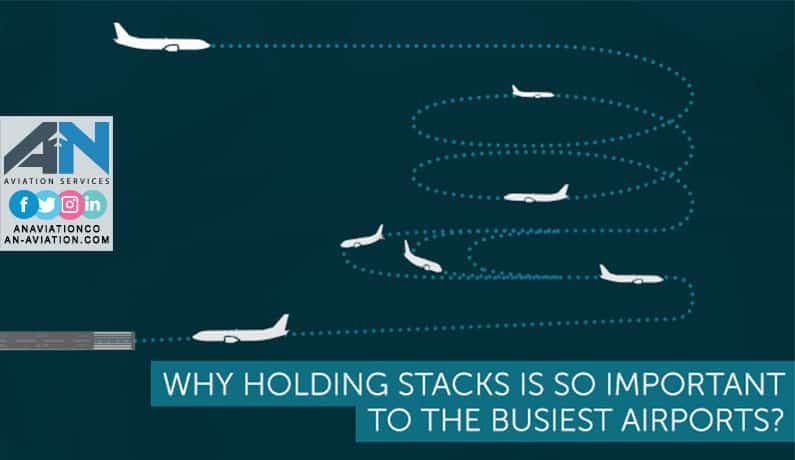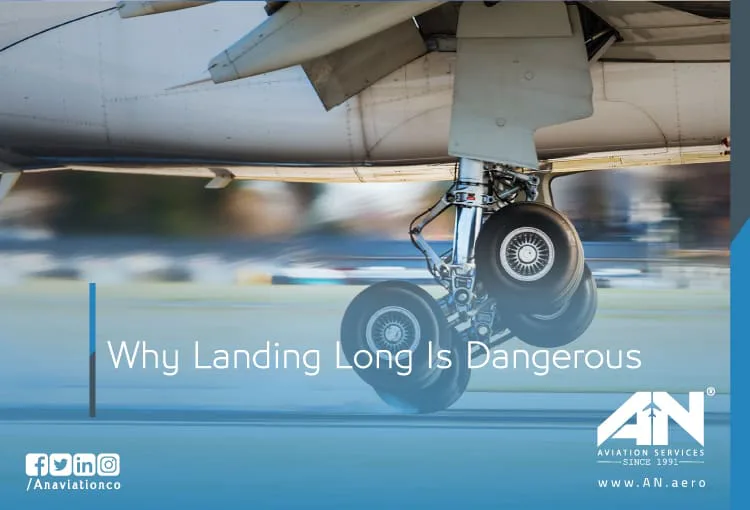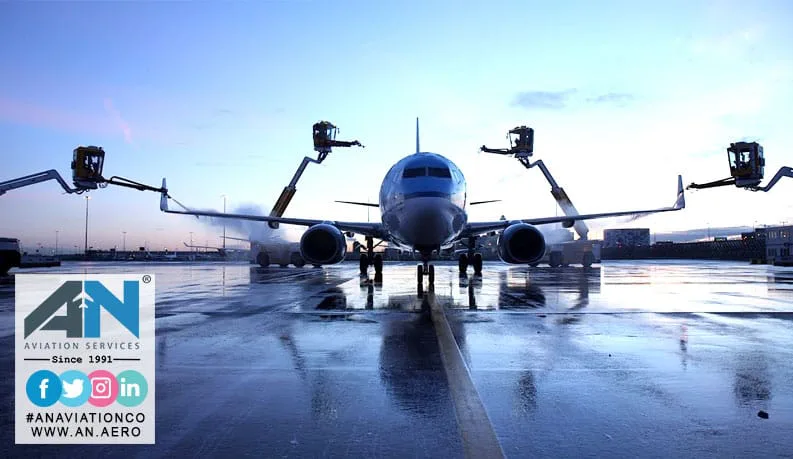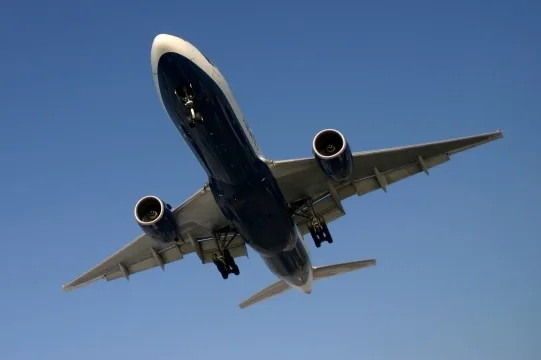
For some travelers, the experience of circling in the air just before landing can be an unexpected twist at the end of their journey. But for air traffic controllers at some of the world’s busiest airports, this practice, known as using holding stacks, is an essential tool for managing the complex flow of arriving aircraft.
In simple terms, holding stacks (or holding patterns) are structured, pre-determined flight paths that allow planes to circle at various altitudes, each typically spaced 1,000 feet apart. This technique is particularly crucial at airports with high traffic volumes, like Heathrow Airport, which regularly relies on holding stacks to maintain a safe and efficient landing sequence.
In this article, we’ll explore why holding stacks are so important, how they work, and the critical role they play in managing congestion at major airports.
What Are Holding Stacks?
A holding stack is a vertical sequence of aircraft positioned in a “stacked” formation above an airport or waypoint. Aircraft enter the holding stack at different altitudes, usually separated by 1,000 feet, and follow a specific oval or racetrack-shaped pattern, waiting for their turn to descend. When an aircraft is cleared to leave the stack, it descends to the next lower altitude, allowing it to progress toward the runway.
This system of stacking planes vertically in the sky is especially useful in managing high volumes of air traffic. By organizing arriving aircraft into controlled holding patterns, air traffic controllers can safely coordinate the flow of incoming planes, especially when runway access is delayed due to congestion, weather, or other operational factors.
How Holding Patterns Work?
In a holding pattern, each aircraft flies a circular or racetrack-like path, maintaining a specific altitude assigned by air traffic control. This path is usually located a few miles away from the airport and at an altitude that allows other aircraft to continue flying safely above or below. The pattern itself has precise dimensions, with controllers giving clear instructions for entry, altitude, and timing.
When air traffic congestion builds up or there’s a delay in landing clearance, arriving aircraft are directed into holding patterns by air traffic controllers. Each plane enters the holding stack at a designated altitude and maintains a safe separation from other planes, ensuring that no two aircraft share the same airspace at the same altitude. The 1,000-foot vertical separation rule is critical to maintaining this safe distance, as it allows multiple aircraft to occupy the same general airspace without risk of collision.
This carefully orchestrated system provides flexibility, enabling controllers to manage the pace at which each aircraft approaches the runway. As planes exit the holding stack in an orderly sequence, they proceed along a specific descent path toward the runway, ensuring a smooth and continuous flow of arrivals.
Why Busy Airports Depend on Holding Stacks?
Holding stacks are particularly valuable at high-traffic airports where the sheer number of arriving flights can quickly overwhelm runway capacity. Airports like Heathrow Airport in London, one of the busiest in the world, depend on holding stacks to manage the constant flow of arrivals. With hundreds of aircraft arriving daily, Heathrow’s airspace can become congested, especially during peak hours. Holding stacks allow air traffic controllers to control the timing of each arrival, creating a buffer that keeps the airspace around the airport safe and orderly.
By organizing aircraft into holding stacks, controllers can address unexpected delays on the ground—such as a slower-than-anticipated departure from the runway or adverse weather conditions that may temporarily halt landings. Holding stacks act as a flexible tool, providing air traffic controllers with the ability to handle these delays without causing widespread disruption to the entire airspace system.
Another significant benefit of holding stacks is that they prevent airborne congestion from extending too far beyond the airport. Instead of allowing planes to arrive unpredictably and then diverting them further away, holding stacks keep traffic relatively close to the airport. This localized approach ensures that aircraft are ready to land as soon as space becomes available on the runway, improving the overall efficiency of arrivals.
The Role of Air Traffic Controllers in Managing Holding Stacks
Air traffic controllers play an essential role in managing holding stacks, as they are responsible for assigning altitudes, monitoring spacing, and ensuring the orderly descent of each aircraft. Controllers maintain constant communication with the pilots in each holding stack, providing real-time updates on their position and the expected wait time before landing clearance. For pilots, clear and concise instructions from controllers are vital, as these directions help them safely maintain their assigned altitude and navigate through the holding pattern.
At large airports, the coordination involved in managing holding stacks requires exceptional attention to detail. Controllers must constantly assess incoming aircraft, estimate their landing sequence, and adjust the stacks based on runway availability and other air traffic considerations. This continuous adjustment process allows controllers to handle unpredictable delays and maintain a safe distance between aircraft, ensuring that arrivals proceed smoothly.
In some cases, air traffic controllers may “spin off” aircraft from one stack to another. This maneuver involves directing an aircraft to another holding stack or altitude if there is a change in priority or if an emergency requires immediate attention. For controllers, managing these shifts in real-time can be challenging, especially during peak traffic periods, but it’s an essential part of keeping the airspace organized and safe.
Benefits of Holding Stacks for Airlines and Passengers
While holding stacks may sometimes result in delays, they actually help improve the overall efficiency of air travel at busy airports. For airlines, holding stacks minimize the need for last-minute diversions, which can lead to increased fuel consumption, scheduling disruptions, and customer dissatisfaction. By keeping planes in a controlled holding pattern near the airport, airlines are able to minimize these risks and bring flights to a timely landing once space is available.
For passengers, holding stacks provide a layer of safety and predictability. Without holding stacks, the alternative would be a chaotic “first come, first served” landing approach that would be neither safe nor efficient. Though it may be frustrating to circle in the air, holding stacks actually ensure that each aircraft lands in an orderly sequence, reducing the risk of congestion on the runway and making arrivals smoother.
Another important benefit for both airlines and passengers is fuel management. In a holding stack, planes typically fly at lower power settings, which can conserve fuel compared to other forms of delay management. While holding does consume some fuel, it’s usually a more efficient alternative to rerouting aircraft to distant holding patterns or alternative airports, both of which would result in higher fuel usage.
Why Holding Stacks Are Here to Stay?
As air traffic continues to grow worldwide, the use of holding stacks is likely to remain a core part of air traffic management. Airports are constantly evolving to handle higher volumes, but physical runway space and terminal capacity are finite. Until new technologies or infrastructure allow for more efficient runway usage, holding stacks provide a reliable and proven method for managing the complex flow of arriving aircraft at busy airports.
Furthermore, advancements in air traffic control systems are enhancing the efficiency of holding stacks. Modern radar and communications technology allow controllers to track aircraft with high precision, which makes managing holding patterns even safer and more streamlined. For example, newer systems can provide real-time data on an aircraft’s position and altitude, enabling controllers to make more informed decisions on when and how to release planes from the holding stacks.
Holding stacks have become a well-integrated part of airport operations, providing a crucial safety net that allows the busiest airports to handle peak traffic without compromising on safety or efficiency. They may seem like a small detail to the average traveler, but holding stacks represent an intricate solution to the ever-growing demands of air travel.
Conclusion: Holding Stacks as a Vital Element of Modern Aviation
In the complex world of aviation, holding stacks serve as an essential tool for managing the flow of arriving aircraft at busy airports. By organizing planes into carefully controlled vertical formations, air traffic controllers can ensure that landings proceed smoothly, even during peak hours and unexpected delays. For airports like Heathrow, where space and time are constantly at a premium, holding stacks make it possible to handle a high volume of arrivals safely and efficiently.
While it may seem counterintuitive to keep planes circling in the air, this approach is actually one of the most efficient ways to manage airport congestion. Through careful coordination, holding stacks help maintain safety, reduce delays, and improve the overall experience for airlines and passengers alike. As the aviation industry continues to grow, holding stacks will remain an invaluable tool in the quest to keep our skies organized, safe, and accessible.
















